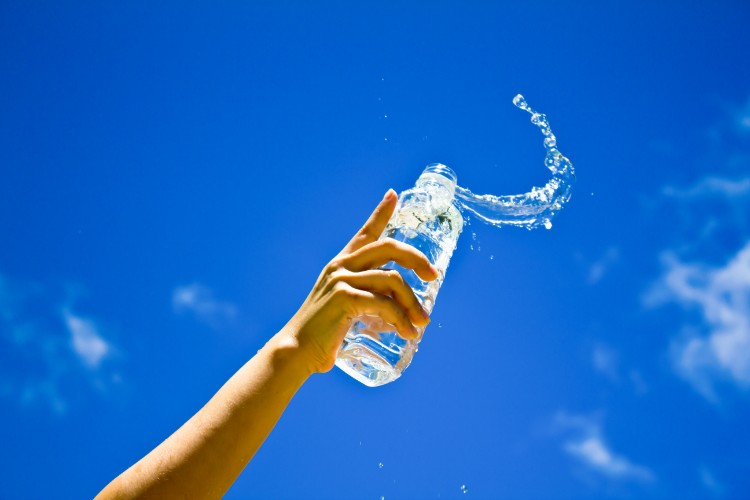What is Sodium Hypochlorite Solution Used for?
Introduction: A Powerful Everyday Solution
We live in a world that depends on clean water, safe food, and disease prevention. One chemical that works behind the scenes is sodium hypochlorite, NaOCl.
You may not know the name, but you have surely used it. That bottle of household bleach in your laundry room is one form. From water treatment plants to hospitals, this solution plays a major role in public health.

What Is Sodium Hypochlorite Solution?
Sodium hypochlorite, NaClO, is a compound made by reacting chlorine gas with sodium hydroxide. The result is a pale greenish liquid that smells sharp and instantly reminds us of bleach.
At room temperature, it remains stable if handled with care. In stronger forms like 5.25 sodium hypochlorite, it becomes the classic household bleach that brightens clothes and disinfects surfaces. In diluted forms, it helps purify water supply systems and keep food safe.
How Do We Produce Sodium Hypochlorite?
Manufacturers produce sodium hypochlorite in different ways. Some methods rely on chlorine gas mixed with sodium hydroxide, while others use site sodium hypochlorite generation. The latter uses electrolysis to create hypochlorite solutions on demand.
We use a 0.8% Sodium Hypochlorite Generator, which allows safe production without storing large volumes of hazardous material. That means fewer transport risks and better control over water quality. The process also avoids the dangers linked with handling hydrochloric acid in large amounts.
Everyday Household Uses
We may think bleach only belongs in laundry, but its uses go far wider. Common applications include:
Cleaning kitchens and bathrooms
Disinfecting cutting boards and food contact surfaces
Brightening white fabrics
Eliminating mold from walls
Sanitizing toys and household items
The trick is dilution. Dilute bleach solutions remain strong enough to kill pathogens yet are safe to handle with protection equipment like gloves.
Public Health and Water Treatment
The disinfection of drinking water changed human history. Before chlorination, outbreaks of typhoid and cholera were common. Today, we add sodium hypochlorite solutions to municipal water supplies. It destroys bacteria, viruses, and parasites while improving water quality.
In many regions, water treatment systems rely on on-site sodium hypochlorite generation to reduce costs and avoid shipping hazardous chemicals. With consistent monitoring of concentration levels, operators ensure safe, clean water flows every day.
Industrial Applications
Industries love sodium hypochlorite for its versatility. It plays several roles:
Paper and textile bleaching
Odor removal in wastewater plants
Surface disinfection in food processing
Biofilm control in cooling towers
Chemical raw material for creating hypochlorous acid
Each use demands specific concentrations. At low levels, it works as a sanitizer, while higher doses act as a powerful oxidizer.
Food Processing and Safety
Food safety depends on rigorous cleaning. Hypochlorite bleaches keep production lines hygienic. Workers apply dilute bleach to conveyor belts, tanks, and utensils. With proper rinse steps, residues remain minimal while microbial control stays high.
Healthcare Facilities
Hospitals fight pathogens daily. Sodium hypochlorite solutions remain a first choice for disinfecting floors, walls, and surgical equipment. During outbreaks like COVID-19, demand for bleach surged worldwide. Quick preparation on-site proved critical in maintaining stock.
Handling Sodium Hypochlorite Safely
We must respect the risks. Sodium hypochlorite is a hazardous material when stored improperly. Direct skin or eye contact causes burns.
Mixing it with acids like hydrochloric acid releases toxic chlorine gas. To stay safe, workers use protection equipment such as gloves, goggles and respirators when handling concentrated solutions.
Storage guidelines are equally important. Keep containers away from heat, direct sunlight, and incompatible chemicals. Always dilute with clean water in a well-ventilated space.
Curious Facts You May Not Know
Dilute bleach loses strength over time, especially in warm conditions
Hypochlorite solutions can break down into salt and oxygen after months
Many people confuse sodium hypochlorite, NaClO, with sodium hypochlorite, NaOCl, even though both formulas mean the same
Some plants prefer to generate solutions fresh on-site rather than store large tanks
Why We Care at Shine
We at Shandong Shine build technology that makes safer water possible. Our 0.8% Sodium Hypochlorite Generator produces stable solutions for municipalities, farms, and food industries. We love knowing our machines protect families by ensuring clean water and supporting public health goals.
Clean water is more than chemistry. It is peace of mind. When we see kids filling bottles at public taps or hospitals disinfecting wards, we feel proud knowing hypochlorite solutions play a hidden yet vital role.
Conclusion: More Than Just Bleach
So what is sodium hypochlorite solution used for? In short, it touches every part of life. From household bleach that brightens clothes to water treatment systems that safeguard cities, this chemical keeps society running.
When produced with care, stored correctly, and applied with the right protection equipment, it becomes an ally, not a threat. Our role is to make sure that Ally is available wherever people need clean, safe environments.
